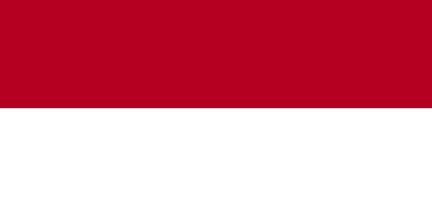
image by Gvido Pētersons, 26 March 1999

Last modified: 2014-05-29 by zoltán horváth
Keywords: latvia | courland | kurshi | kurzeme | vidzeme | latgale | pilten |
Links: FOTW homepage |
search |
disclaimer and copyright |
write us |
mirrors
See also:
Courland is geographicaly 1/5 of Latvia, politicaly was 1/3 of
Latvia .Curonia (latin) comes from Kurshi tribes settled in
modern western Latvia and western Lithuania (see Kursiu nerija in
Lithuania). Mostly all german ascent population are colonists
from Brandenburg and Lower Germany. Knights (Swordbrothers -
later Livonian ordem - was a warriors ordem and keep only
military and church power). Theutonic state ends (IIRC) in 15
century. After them there was many independent and
quasiindependent states, greatest was Duchie of Courland
(16-18cc) and Pilten Bishopy.. Real power of germans (baltic
germans) ends only after revolution in 1905 and landreform in
1922
Courland as name never expieres. Duchie of Courland after
incorporation in Russian Empire was renamer in Courlands
Gouvernorate (Kurljandskaja Gubernija).
During WWI ,Germany planed a protectorate over the Baltic between
1917 (Russia's withdrawal from the war) and 1918 (German
defeat).This project was never realised (was not accepted by
German kaiser). More realistic was "Ostland project" -
creating of german state in base of former Courland, Livland and
Estland gouvernorates.In pre-WWII Latvia (also in modern Latvia).
Courland was one of constitutional parts of Latvia (Kurzeme,
Vidzeme, Latgale - three stars in Latvian Coat of Arms).
Gvido Pētersons, 29 June 1999
Now I get b/w copy of 1936 book from Karlis Dzirkalis
"Latvijas karoga vesture". There are lot of Latvian and
pre-latvian flags.
Flags of Duchie of Courland (17th - 18th centuries) includes
three flags: State, Merchant and Naval flags.
Gvido Pētersons, 26 March 1999
At J.W Norie - J.S. Hobbs: Flaggen aller seefahrenden
Nationen, 1971 [nor71] (original
print 1848):
95 Courland: Red, an Eagle White.
96 Courland: White, an Eagle Black.
97 Courland: Red over White.
Peter Hans van den Muijzenberg, 12 November 2001

image by Gvido Pētersons, 26 March 1999
The red over white flag appears at Steenbergen
Book as Courland merchant.
Jaume Olle, 4 Febuary 2003
The cover of [sie63] shows what
the book describes as approximately a quarter of a flagchart, one
of many to roll of the, mostly Dutch, presses for the use of
seafarers: "Tableau des Pavillons que la Plupart des Nations
arborent a` la Mer. Faitau de'po^t des cartes et plans de la
marine pour le service des vaisseaux du Roy par ordre de M. de
Machault, Garde de se'aux de France. Par le Sr. Bellin Inge'nieur
de la marine. 1756." [beL56]
On the 2nd row from the bottom there is "Pavil. de
Curlande" - A flag of two equally wide flywise stripes, red
and white.
Peter Hans van den Muijzenberg, 4 January 2001
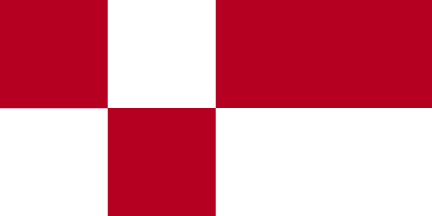
image by Gvido Pētersons, 26 March 1999
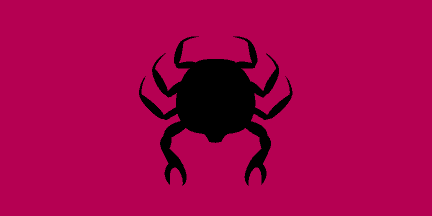
image by Gvido Pētersons, 26 March 1999
To my knowledge, Courland displayed a crab on the flags flown
from his African colonies forts. One source is the 1848 flag book
by Norrie/Hobbes, in this edition also an eagle is associated to
Courland flags.
Pier Paolo Lugli, 26 March 1999
Here is the flag from
the Latvian Academic Librarry representing the book ,dated 1772,
"Worlds navigation flags" the copy of Bologna
manuscript at <www5.acadlib.lv>.
Description of the picture here:
"the sea crab on the Raspberry red background - the flag of
military ships of duke Jacob"
eermaniitis, 24 February 2010


images contributed by Jarig Bakker, 10 April 1999
Three flags from Curland were reported recently. I know about
a fourth flag: It is red with white eagle. Anyone know his use
(ducal standart?).
Jaume Olle, 10 April 1999
Those flags are on the Flag Chart of Laurie, 1842, in Wilson's
Flags at Sea (1986), as well as a blue eagle on a white field.
Jarig Bakker, 10 April 1999
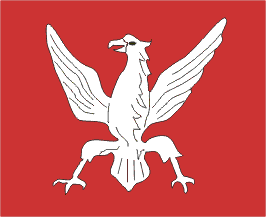
image by Jaume Olle,13 January 2003
No. 27 - Curland.
Source: Steenbergen book [stb62].
Jaume Olle, 13 January 2003
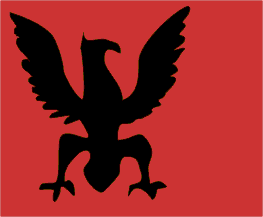
image by Jaume Olle, 22 January 2003
No. 96 - Courland.
Source: Steenbergen book [stb62].
Jaume Olle, 22 January 2003
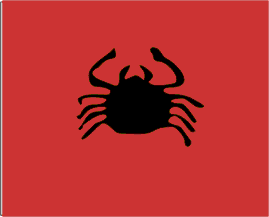
image by Jaume Olle, 22 January 2003
No. 97 - Courland merchant flag.
Source: Steenbergen book [stb62].
Jaume Olle, 22 January 2003
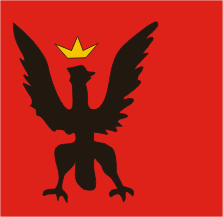
image by Jaume Olle, 28 January 2003
No. 135 - Princely Flag.
Source: Steenbergen book [stb62].
Jaume Olle, 28 January 2003
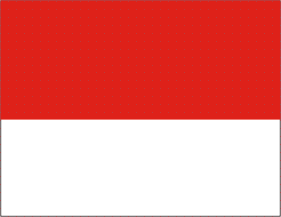
image by Jaume Olle, 4 Febuary 2003
No. 170 - Courland merchant.
Source: Steenbergen book [stb62].
Jaume Olle, 4 Febuary 2003
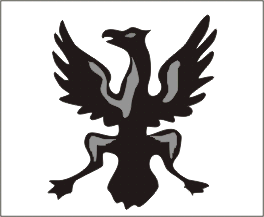
image by Jaume Olle, 16 April 2003
No. 457 - Courland.
Source: Steenbergen book [stb62].
Jaume Olle, 16 April 2003
During WWI ,Germany planed a protectorate over the Baltic
between 1917 (Russia's withdrawal from the war) and 1918 (German
defeat).This project was never realised (was not accepted by
German kaiser).
Gvido Pētersons, 29 June 1999
Answer of Kaiser Wilchelm to Courlands Land Council to
decision about creation of Duchy of Courland in March 8. 1918(in
German):
Wir Wilchelm, von Gottes Gnaden Deutscher Kaiser, König von
Preusen u. beauftragen hiermit Unseren Reichskanzler, der Grafen
von Hertling, dem Kurländischen Landesrat zu erklären, daß Wir
auf den Uns durch seine Vertreter übermittelten Wunsch und auf
den Bericht Unseres Reichskanzler im Namen des Deutschen Reiches
das Herzogtum Kurland als freies und selbständiges Staatswesen
anerkennen und bereit sind, im Namen des Deutschen Reiches
diejenige Staatsverträge mit Kurland abzuschließen, die eine
enge wirtschaftliche und militärische Verbindung beider Länder
gewährletsten. Gleichzeitig beauftragen Wir Unseren
Reichskanzler, den Abschluß dieser Verträge vorzubereiten.
Urkundlich haben Wir diesen Auftrag Allerhöchst Selbat vollzogen
und mit Unserem Kaiserlichen Insiegel versehen lassen.
Gegeben ................ , den 15.März 1918
Wilchelm
Graf von Hertling.
Gvido Pētersons, 25 April 2001
In short it says: We recognize the Duchy of Courland as a free
and independent state and will conclude treaties for economic and
military co-operation, signed: Wilhelm, Count of Hertling,
Imperial Chancellor.
Jarig Bakker, 25 April 2001
It is rather signed and sealed by the Emperor. The count of
Hertling seems to have countersigned it.
Elias Granqvist, 25 April 2001